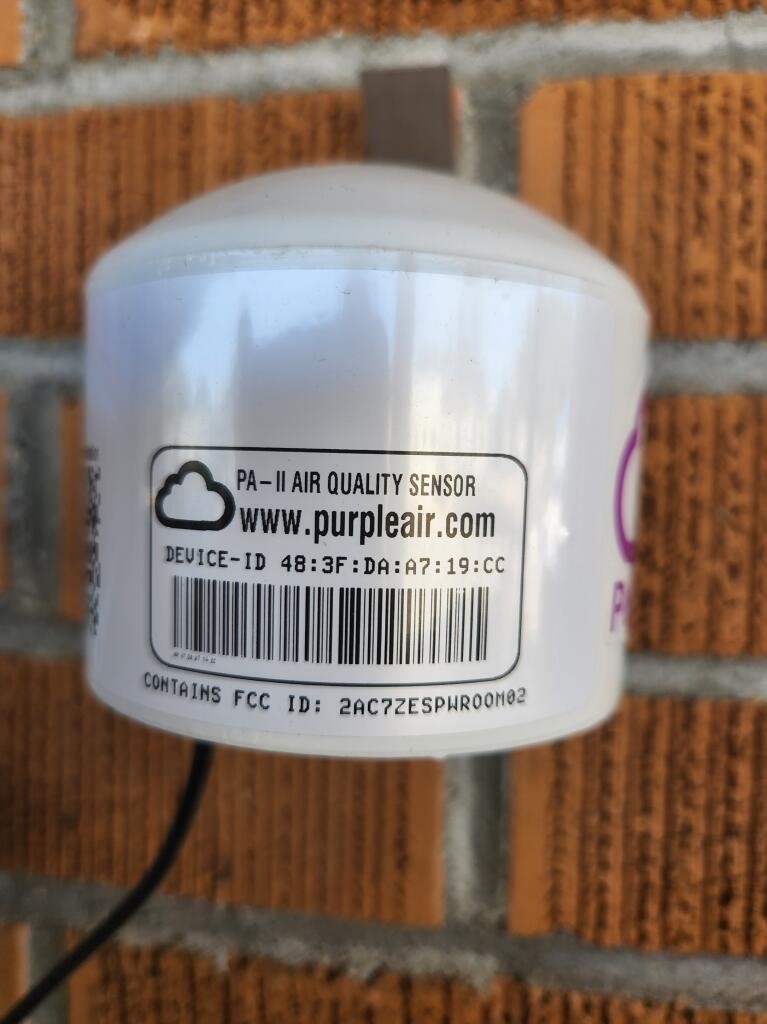USM Installs New Air Quality Sensor to Aid in NASA Initiative
Thu, 04/21/2022 - 09:37am | By: Van Arnold
 An innovative, high-tech sensor recently installed at The University of Southern Mississippi
(USM) will allow anyone in the Hattiesburg area with Internet access to check particulate
matter in the air.
An innovative, high-tech sensor recently installed at The University of Southern Mississippi
(USM) will allow anyone in the Hattiesburg area with Internet access to check particulate
matter in the air.
USM is one of only three sites in the state to install the PurpleAir sensor being used as part of an air quality initiative with NASA Langley and spearheaded by the University of Toledo.
Dr. Sherry S. Herron, Associate Professor Emerita of Science Education at USM, collaborated with University of Toledo Professor Kevin Czajkowski to get the sensor installed on the Hattiesburg campus. Herron’s assistance was sought through her work as USM’s GLOBE partner, a position she has held since 2005. GLOBE.gov is the citizen-science and K-16 outreach for NASA.
“With the launch of the NASA TEMPO satellite on air quality scheduled for December 2022, we are trying to engage more professors, K-12 teachers and students, and other citizen scientists across the United States in the project,” said Herron. “When Dr. Czajkowski noticed that few air quality sensors were in operation in Mississippi, he reached out to me. The world can now see and use real-time data from Hattiesburg, and we can receive presentations from NASA scientists.”
The TEMPO instrument is a UV-visible spectrometer that will be the first space-based instrument to monitor air pollutants hourly across the North American continent during daytime. It will collect high-resolution measurements of ozone, nitrogen dioxide and other pollutants, data which will revolutionize air quality forecasts.
Herron notes that NASA scientists rely on students and other citizen scientists to help provide a richer data source than could be obtained otherwise.
“Strict protocols and, in this case, approved technologies, used to collect data by students and others ensure its validity and reliability,” said Herron. “Data collected in this manner has been used since the inception of the GLOBE program in 1994 to ground-truth and refine satellite data.”
The PurpleAir sensors use laser counters to measure particulate matter in real time. A laser counter uses a fan to draw a sample of air past a laser beam. Any particles in the air will reflect some light from the laser beam onto a detection plate, like dust shimmering in a sunbeam.”
Herron emphasizes that she is “absolutely thrilled” that anyone in Hattiesburg can access this aspect of air quality on a daily basis.
“Yes, we are blessed to have cleaner air than is found in many parts of the country and world, as evidence by readings we have taken daily at USM, but now we can monitor it ourselves while contributing to the greater knowledge base needed to protect our global environment,” said Herron.
Herron expresses special thanks to USM Chief Information Officer David Sliman, and Physical Plant Associate Director David Bounds for their assistance in the PurpleAir sensor’s installation. To access the sensor, visit: https://map.purpleair.com/1/mAQI/a10/p604800/cC0#2.26/29.58/-92.37